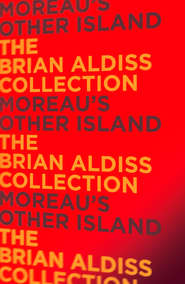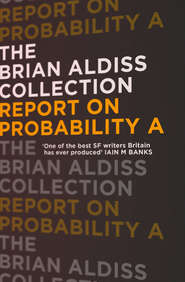По всем вопросам обращайтесь на: info@litportal.ru
(©) 2003-2025.
✖
Finches of Mars
Настройки чтения
Размер шрифта
Высота строк
Поля
Silence fell between the two men. Then Simpson said. ‘At least we treat women better now.’
He felt he had scored a point there.
Operation Horizon delivered a positive report to the executive council of the United Universities. Subterranean channels had been charted, and a reservoir containing plentiful H
O of unknown quality. A map of the area on the Tharsis Shield accompanied their report, with waterways depicted like blue veins.
It was the verdict of the two hydrologists making the report that this area would be a suitable site for the settlement to be established, at least as far as water supply was concerned.
This report provided the necessary impetus for the development of this great and unprecedented enterprise – the colonisation of Mars.
A surveyor by name Moses Barrin was immediately hired to draw up sites for proposed Martian settlements known as towers. His instructions were to demarcate a site where six small habitations could be established. He used maps created from data from both Operation Horizon and even the now ancient NASA vehicle Curiosity. Barrin was to be among the first humans sent to colonize Mars.
The Message, newspaper of the Vatican, warned of the moral dangers of venturing onto a planet where Jesus Christ had never trod.
Several screamers showed cartoons of Jesus wandering alone, asking, ‘Where’s someone to save?’
4 (#ub9e7848b-6977-5299-92fa-6583941edc14)
Final Journey (#ub9e7848b-6977-5299-92fa-6583941edc14)
The report of Martian water running underground did much to excite public interest in the project, and to stir the involvement of the universities. There was less talk of trips to Mars being ‘madness’. In Chinese cities new factories were manufacturing ‘space planes’.
The United Universities, from the original three, had expanded to thirty-one signatories, consisting mainly of universities or departments of universities situated in the United States of America, Britain, Europe and China. Other universities were drawn in as by a magnet, tempted in the main by the two hydrologists’ positive report on Tharsis.
Soon there existed a world-wide body of growing strength and ubiquity which stood in defiance of what the British Foreign Minister had described as ‘the New Dark Ages of Technofrolic’. After renewed Beijing scrutiny, the charter was revised with fresh restrictions: In addition to the ban on any proposed traveller to Mars with a known religious background, there were to be no travellers above forty-five years old (with certain rare exceptions). Signing members guaranteed to supply regular six-monthly contributions to a central fund. In exchange, signatories were entitled to receive directly any fresh scientific discoveries from Mars.
The news of the hydrologists’ discovery had travelled faster than their ship. The names of Simpson and Prestwick were already forgotten by the media by the time the automatic call sign on their tiny returning ship sounded at Luna Lookout. Luna signalled the vessel to come in.
No reply was received.
An emergency ship was sent up. This space plane had been manufactured in nine days in the city of Chenggong, an urban development of forty-nine million people.
The Aquabatic, with its freight of the two hydrologists, was gaining speed, heading towards the Sun. The rescuers locked on to its hull, sending a sequence of calls to those within. They went unanswered.
A request for instruction was sent to Lookout. Lookout signalled Chicago-Emergency. Chicago advised immediate entry of ship by men in emergency equipment.
A hole was cut in the Aquabatic’s hull and a man by the name of Will Donovan, suitably masked, forced his way in. There he found the bodies of the two hydrologists lying in the cramped living quarters, Prestwick on his bunk, Simpson sprawled face-down on the floor. Both men had been dead for several weeks.
A discolouring heliotrope showed on their skins and faces. An argument was conducted between ship and ground station; the bodies ought to be left where they were, to make their final journey into the Sun undisturbed – the public must not be alarmed by these unanticipated deaths. Alternatively, the bodies should be encapsulated and brought to Hospital Luna under conditions of secrecy, for research purposes.
This was the view that won the day. The corpses were transferred to the rescue ship. Remaining behind to be forever lost were recordings of their vellicative memories. The Aquabatic was left to drift on its course towards the Sun.
The mystery illness that had stricken the hydrologists served as a warning that it was not simply from the void that dangers could strike. Humanity carried with it many metabolic organisms that eluded interrogation.
At least the disaster led to more cautious preparation for large vessels attempting the gulfs of space. Any person going aboard was subjected to rigorous medical examination which included a period of quarantine.
A rocket named Zubrin was the second piece of UU hardware to cross the approximately 50 million miles to Mars. All launches, including this one, were scheduled to take advantage of the best possible mutual orbits. More advanced than the hydrologists’ ship, it carried on board no living thing, only an android robot of some size and strength. The android survived both the flight and the landing, whereupon it proceeded to unload building materials, emergency food rations, and some tanks of oxygen, in preparation for future settlers.
‘For my next trick …’ as the android would have said, had it the wit, Zubrin turned itself into a drill and began to drill down through the regolith in the expectation of hitting subterranean water.
All this in preparation for the arrival of human beings, poor frail biological constructs who would need water – and much else besides. Later, later … Politics thrives on delays.
First of all, the UU, still developing and having now signed up Moscow University, pursued the programme known as D&D (standing for Distance and Danger). The distance problem was regarded as a ten-month ordeal, sometimes less. It had to be endured between Earth and Mars. New faster space planes were cutting journey times. Humans back in the Paleolithic age had accustomed themselves to dealing with distances, when hunter-gathering enforced ceaseless movement of groups and tribes. The challenge of distances in space was met by the development of a plasma drive, instead of a chemical drive, which made journeys faster and a good deal safer.
There still remained among the dangers exposure to radiation during the journey. Three forms of radiation were known, protons emanating from the Sun, heavy ions from cosmic rays, and the newly discovered normon, radiating from the Oort Cloud. (At this time, the normon was regarded as benevolent, indeed as a helpful propagator of microscopic life on early Earth.)
If shielding were added to the space vehicle it would slow its progress, prolonging time of exposure. Cataracts and cancers would still occur. For at least another century, the visit to Mars was generally regarded as a one-way trip. Only Barrin was to make it both ways.
Still, there were those, and not the most foolhardy either, who spoke out to say it was necessary to leave Earth, an Earth by now riddled, like death watch beetles in old timber, with threats including random procreation (now recognised as another contribution to global warming), new super-bugs, missile systems, and hostile and distraught dictatorial states. Supposing the pioneers were to die on Mars: they were already on what Hamlet had termed ‘a place from whose bourn no traveller returns!’ Corpses would be wrapped in polythene and left to mummify by an outer wall.
The first arrivals, sponsored and supported by UU, found themselves suffering from many lesser maladies which light Martian gravity did little to heal. Brave hearts had had less reason to pump strongly in the weightlessness of the journey. Bones and muscles had been weakened, despite rigorous exercise-routines compulsory on the trip.
Broken bones were frequent – but lo! The miracle! There one stood on the planet Mars – even if only with a crutch! Space anaemics, deficient in red blood cells, vied with the crippled for beds in temporary Martian hospital wards. Even injured, they set machines to building permanent bases, the towers – all under the watchful eye of Barrin.
Six towers now stood on the Tharsis bulge. Some towers were taller than others, some more substantial, depending on UU contributions. There were connections between all of these outposts of humanity and also, inevitably, some mistrust, the dregs of old hostilities. In the settlement, West and Chinese were closest and in friendly communication.
For stay-at-homes, photographs of the half-dozen buildings standing in defiance on the Tharsis Shield were as popular as studies of Earth seen from Moon had once been, or kittens wearing ribbons still were.
5 (#ulink_f52a2da9-dc39-52fb-ac1c-ab7cf8e24a70)
The Shape of the UU (#ulink_f52a2da9-dc39-52fb-ac1c-ab7cf8e24a70)
Mangalian had had a say in the positioning of this, the settlement, and even the universal sale of its photographs. Under his guidance, the UU’s Mars enterprise progressed rapidly.
He showed undoubted flair. NASA/Beijing had a stable organisation with a patient professional ability to plan projects which would not come to fruition until years later. The UU formed a union with NASA, and benefitted from this planning. The UU/NASA union instigated a raft of interviews and examinations, dedicated to continuous selection of those of either sex prepared to prove themselves good citizens of a distant planet. Only the educated and adventurous need apply. ‘The wise and the wild,’ as news shriekers had it.
The Union issued non-return certificates to those whose credentials had been accepted. Many had already taken up their situations in the Tharsis region, in the towers, accepting that there was no return to planet Earth. Potential colonists continued to join.
Only four years later, a dedicated worker from Mangalian’s main office, Rosemary Cavendish, went to Mars herself. She adopted the humbler name of Noel. A new department in UU/NASA had suggested that terrestrial names should be replaced by computerised names for use on Mars. It symbolised a new beginning, and a marginal amount of finance would be saved. For a while this system was used, eventually to be abandoned in the face of the confusion it caused. Too many people were rejecting their new name from the start.
Rosemary/Noel had an important role in Mangalian’s grand theatre. She was made Director of the West tower immediately after her arrival there.
So the colonisation process continued towards its remarkable outcome.
A few years passed. Bernard Tibbett and his partness Lulan entered the scene. Lulan was a retired President of Harvard University and Bernard Head of Harvard Business School. Tibbett was voted official banker
and President of World UU. A short sharp man, he became known for his energies as the Terrier. His partness – a woman intolerant of weakness – was the Grey Wolf. People – ‘the great un-castrated’ in the Grey Wolf’s words – should not mourn at funerals but celebrate – one more over-populator, one more consumer, less.
This forbidding couple had more than money and status invested in the distant Martian Towers. The Terrier had a younger sister, once called Dolores, but now on Mars and renamed Sheea. Sheea, the Terrier learnt, was now pregnant, despite only having been on the planet a few months. Curiously, no name of the inseminator had been given. Good care was being taken of her. Sheea had been moved to stay the West tower gestation ward and was on a special diet. Everyone was hoping for a successful birth.
Tibbett was making a speech when the news that his distant sister was going into labour came through. The Terrier was immediately anxious for his sister’s well-being, but had to attend to the meeting.
The delegates were at a regular committee. On this occasion the honoured guest, Barrin, was attending. Barrin appeared in a wheelchair. He had been on Mars and returned to Earth. The King of England had given him a medal especially coined for the occasion. Barrin vowed to go back to his colleagues on Mars, but his legs were unlikely to permit it. More significant, he was having problems with breathing. His lungs had already been equipped with a chemical pump.
‘We of UU,’ said Tibbett, stroking his chin and frowning, ‘constantly worry about the expense of sustaining the Mars operation. Rightly so. We need better vehicles, more space planes, to carry larger cargoes. We might then be able to drastically reduce the present number of trips, thus keeping to a minimum the number of expensive rockets lying unused on Tharsis. If even a half of the investment spent on military matters – now that the morally unjustified, short-sighted invasion of Kazakhstan and the bombing of Alma Ata is over – was invested in the construction of better space vehicles with more effective propellant systems … Well, as you know, experiments are taking place in Chenggong. A prospectus to this effect is already being drawn up.
‘We must noise it in the press and the squealers and shriekers, otherwise the news will be suppressed. We are already at the planning stage.’











